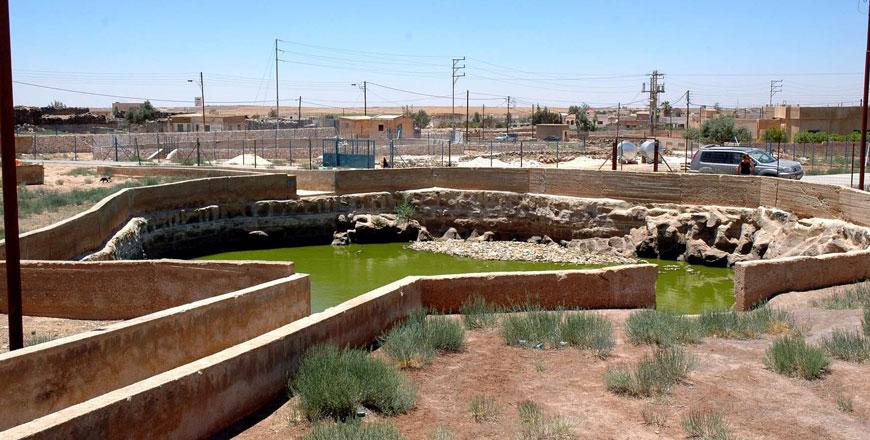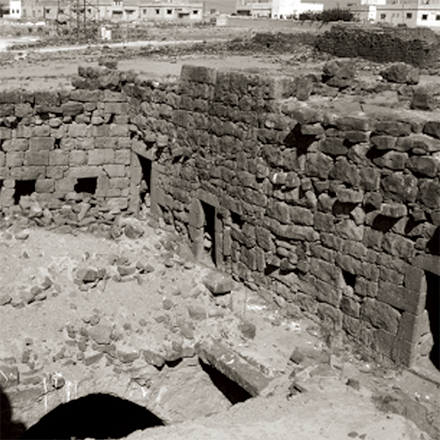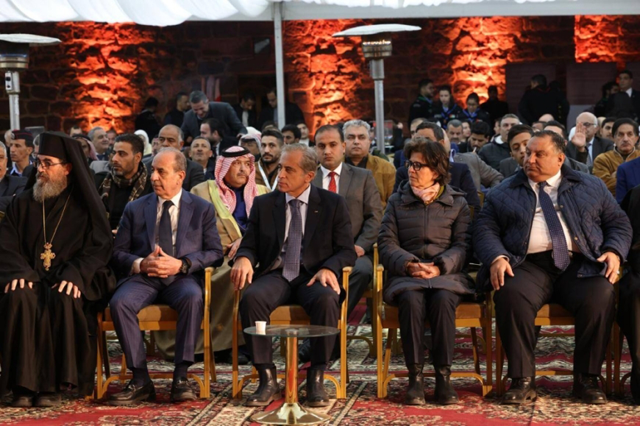You are here
Scholar encourages rehabilitation of ‘overlooked’ northeastern sites
By Saeb Rawashdeh - Nov 11,2018 - Last updated at Nov 11,2018

A view from the settling tank onto the first of the three main cisterns with rounded enclosure walls in Al Dafanya (27km northeast of Um Al Jimal) (Photo courtesy of Ulrich Bellwald)
AMMAN — The northeastern part of Jordan is one of the most overlooked regions in terms of touristic offers across the country, despite the existence of many archaeological sites, a Swiss archaeologist and architect remarked, citing the lack of tour operators’ attraction towards Mafraq Governorate.
“There are many reasons for tour operators to turn their back on the area along the border to Syria — ignorance about the treasures of cultural heritage to be found there, bleak landscape, travelling distance from Amman and lack of decent facilities,” said Ulrich Bellwald, noting that the recent turmoil stemming from the Syrian civil war and refugee crisis added even more reluctance from the touristic sector towards the region.
Although northeastern Jordan has “an abundance of ancient towns and villages from the Late Roman and Byzantine period that have survived until modern times”, Bellwald said that Um Al Jimal is the only site widely known to non-scholars.
”All these sites are stringed like the pearls in a necklace along a local road, winding through the gently ascending hills between the border of Jordan to Syria and the highway leading from Mafraq eastwards to the Iraqi and Saudi border,” he noted.
There are ten significant sites from the Late Roman and Byzantine period in the area, Bellwald continued, adding that most of them are very well preserved, with conserved ceilings and rooms with remnants of the interior equipment, such as shelves inserted into the walls, food containers made of clay to protect the goods from mice and rats, and beautifully dressed animal feeders.
Towns and villages also have “ingenious water supply”, according to the scholar, who said run-off water flowing from the rainy season is collected in intake channels and stored in huge cisterns with some cisterns being surrounded with troughs for animals.
After Islamic conquest in 634 AD, these settlements remained in use all through Umayyad, Abbasid and Mamluk rule, he pointed out, citing the sites of Sama Es Sirhan, Umm Es Surab, Al Baij, Um Al Jimal, Subheya, Sabha, Al Dafanya, Umm Al Qittayn, Deir Al Kahfand and Deir Al Qinn.
In order to change the status quo, Bellwald suggested following certain measures such as raising awareness, setting up a Roman and Byzantine trail, cleaning the sites and organising their inventory, improving accessibility, ensuring emergency preservation interventions and rehabilitating the water supply system.
“The roads are well developed and in excellent condition, hence it allows easy access to all of these sites, even with tourist busses and coaches,” the researcher stated, adding that “all ancient sites are part of modern settlements; hence the establishment of the required infrastructure for a tourism trail and the needed facilities may be implemented together with the local communities.”
The ancient sites are mostly in astonishing conditions of preservation and could easily be cleaned, restored and rehabilitated, Bellwald elaborated, suggesting that each site should be developed into a model to show how elevated the standards of social, economic and cultural life were in that period.
“Due to the abundant and extremely attractive fund of preserved cultural heritage from Late Roman-Byzantine periods, the project could easily be implemented in a kit-system, through work steps following a list of priorities,” he underlined.
He stressed the involvement of local communities as an opportunity to generate jobs, which would also ensure the communities’ support towards the project.
Related Articles
AMMAN — The northeast of Jordan is home of number of ancient cities and villages from the Late Roman and Byzantine period, which served as a
AMMAN — Prime Minister Jafar Hassan lit the Christmas tree on Monday at the Umm Al Jimal archaeological site in Mafraq, which was added to t
IRBID — Umm Al Jimal in southern Jordan had a “strong ecclesiastical character” as testified by its 16 well preserved Byzantine churches, ac














